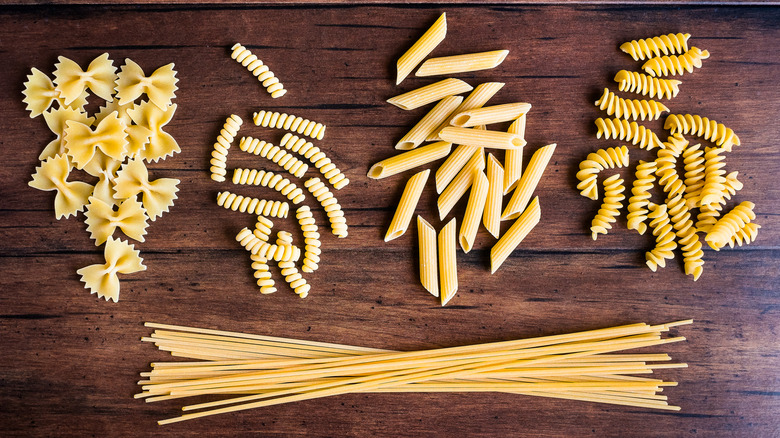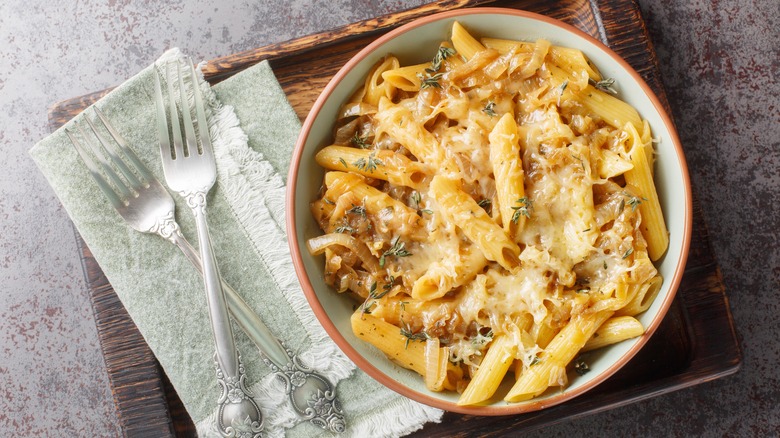How To Give Your Pasta Extra Flavor Before You Even Boil It
Pasta is the unassuming pantry staple that forms the basis of many hearty, delicious meals. While the focus is often on enhancing the flavors around the pasta, you can actually improve the taste of the noodles themselves by roasting them. It's an idea that many people approach with caution, but the results speak for themselves.
The easiest way to roast pasta is in the oven. Take the amount you plan to use and spread it flat and evenly on a baking tray. The pasta pieces don't need much spacing — just enough to ensure they are all exposed to the heat. After 10 to 15 minutes at 350 degrees Fahrenheit, the pasta should turn a deep golden brown and release a rich, nutty aroma. Once cooled, you can boil it as usual, but keep in mind that roasted pasta will retain a firmer texture and take longer to cook. For al dente lovers, this method is the gift that keeps on giving.
To achieve softer pasta, place the roasted pasta in a bag of water and let it sit for a couple of hours before cooking. This will soften the texture without altering the taste. However, there's a catch: the pasta may become a little gummy thanks to the starchy water it soaks in. Still, this is nothing a celebrity chef-approved store-bought pasta sauce can't fix.
More ways to roast pasta
When you roast dry pasta, the Maillard reaction — which is different than caramelization — takes place. This is a chemical reaction between amino acids and sugars triggered by consistent, low heat. It results in browning and often releases pleasant, nutty aromas. Ultimately, it deepens the complexity of a food's flavor profile. Pasta might not seem like an obvious candidate for this method, but that's only because we usually boil it instead of applying dry heat. Chemically, however, pasta is a natural choice, as it contains a fair amount of natural sugar in the form of complex carbohydrates.
Aside from the oven, you can use the stovetop or even a microwave to "roast" pasta. The microwave method requires a teaspoon or two of oil on the pasta, and takes only three to five minutes. Just remember to stop and stir the pasta every minute or so to ensure even heating.
For the stovetop, it's best to break long pasta into smaller pieces to ensure direct contact with the bottom of the pot or pan. While oil is helpful in this method, it's not imperative. Heat the pot or pan to medium-high and stir the pasta frequently for six to 10 minutes. All these methods should produce a warm brown color and a fragrant aroma, and they work with any pasta shape — just make sure to choose the right one for your sauce.


